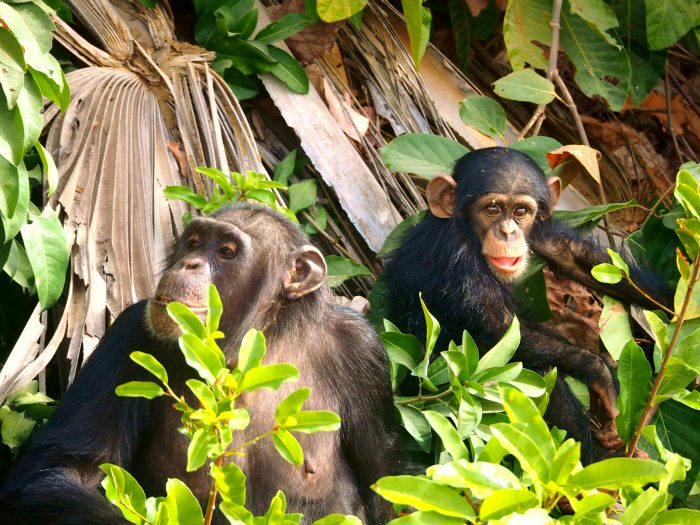
Por condições dignas de cativeiro para todos os animais não humanos
16 de julho, 2020
“The Chimpanzee Chronicles”, de Debra Rosenman: “Os chimpanzés não nos pertencem e certamente não pertencem à ciência”
3 de novembro, 2020Pursuing dignified conditions of captivity for all non-human animals

By Jaqueline B. Ramos*
Times of pandemic demand a deserved reflection on diverse ethical and moral dilemmas. Among them the way we relate to non-human animals.
In this universe, there is a line of action whose objective is to provide beings who have suffered (or still suffer) in circuses and other exploratory activities, or in structures below their needs in zoos, more dignified conditions of life in captivity. As a matter of urgency, this work remains stronger than ever.
In Brazil and in other countries, several NGOs, specialists and activists work on strategies for what we call “free the animals”. GAP – Great Ape Project, for example, of which I am a member, defends the right of great primates to live freely in their habitats. This is obviously ideal. It is conservation and respect, the noblest of long-term goals.
But from the moment that chimpanzees, gorillas, bonobos and orangutans are deprived of this right and become victims of abuse, without the possibility of living in the wild, the mission becomes to offer the best possible quality of life under captivity. For that we mean their transference for sanctuaries.
In sanctuaries, great primates are treated for physical traumas – tooth extraction and mutilation, for example – and psychological – stress and depression for living in small spaces and submitted to exhibition, among others – and have the chance to recover, form groups and live without any kind of obligation.
Brazilian sanctuaries affiliated to GAP currently house more than 80 chimpanzees. Several sad pasts have turned into success stories. Some individuals are having the chance, for the first time or after many years, to enjoy the company of another chimpanzee. Others explore the opportunity to live in 1000m2 enclosures with complete freedom to come and go between open and closed areas.
We have many examples of what is an ideal live in captivity, such as adoptive father Jimmy, the the famous Habeas Corpus of Cecília and the adorable Black. Just to name a few.

Jimmy turned out to be the adoptive father of Sara and Suzi a few months after he arrived at the sanctuary (GAP) 
Cecília was the first chimpanzee in the world to own the right of an Habeas Corpus (GAP)

Free Bambi and Happy!
The Elephant Sanctuary Brazil (SEB), the first and only in South America, an area of 1,100 hectares in Mato Grosso state, also has success stories and is in full expansion to tell others. Since 2016, there have been five complex transfer operations national and internationally with the support of a highly experienced team. SEB is a benchmark for the proper care of captive elephants on the continent.
The current residents of SEB – Maia, Rana, Lady and Mara – are very well adapted. It is worth following their achievements and daily improvements through the sanctuary’s social networks. It is good for the soul to see them having the opportunity to enjoy an environment much closer to theirs in nature.


The list of possible future residents is long and the transfer priority at the moment is that of the Asian female 50-year-old elephant Bambi, who has lived in the zoo in Ribeirão Preto, country side of São Paulo state, since 2014 and is in very poor health.
But Bambi’s case has entered a legal stalemate and a new attempt is being made by the NGOs Association National Forum for Animal Protection and Defense (FNDPA, in Portuguese), which filed a request for an injunction on the transfer at São Paulo Court of Justice earlier this month.
The expectation now is the manifestation of the zoo and local environmental authorities and the decision by the Judge. In parallel, the general public can contribute to pressure the authorities to simply release the elephant, saving time and resources, and mainly speeding up the urgent highly specialized care demanded by Bambi.
Happy, another female elephant, has a similar history, but at the Bronx Zoo, in New York, United States. She is one of the current clients of Non-Human Rights Project (NhRP), which works to change the “thing” status of animals in the legal system.
From this new and necessary perspective, the freedom from a situation of captivity with inadequate conditions and the transfer to sanctuaries is the natural consequence. There are still many challenges to be overcome, but little by little the acknowledgment is happening and the work in the legal area is advancing.
NhRP also has chimpanzees as clients and there are plans to represent dolphins in the future. The cases of Happy, Bambi, Jimmy, Cecília, Black and many others, in different parts of the world, reflect the complexity of keeping wild animals in captivity and the urgent need to change views and paradigms.
If the moment is one of crisis and this leads to reflection, let the recognition come that all life deserves to be respected. And that the obstacles are eliminated and economic, political or individual interests are left aside, so that great primates, elephants and all other non-human animals enjoy their right to live in dignified conditions of captivity.
*Jaqueline B. Ramos is the communication manager at GAP Project International and journalist at Ambiente-se Comunicação.


